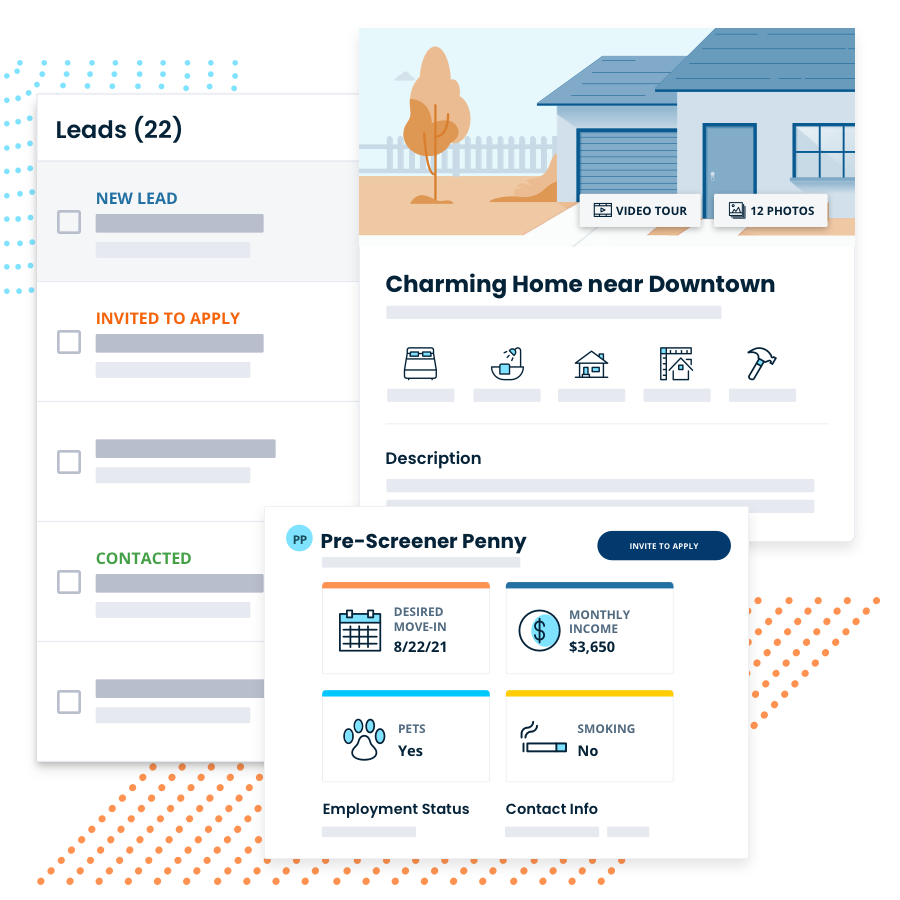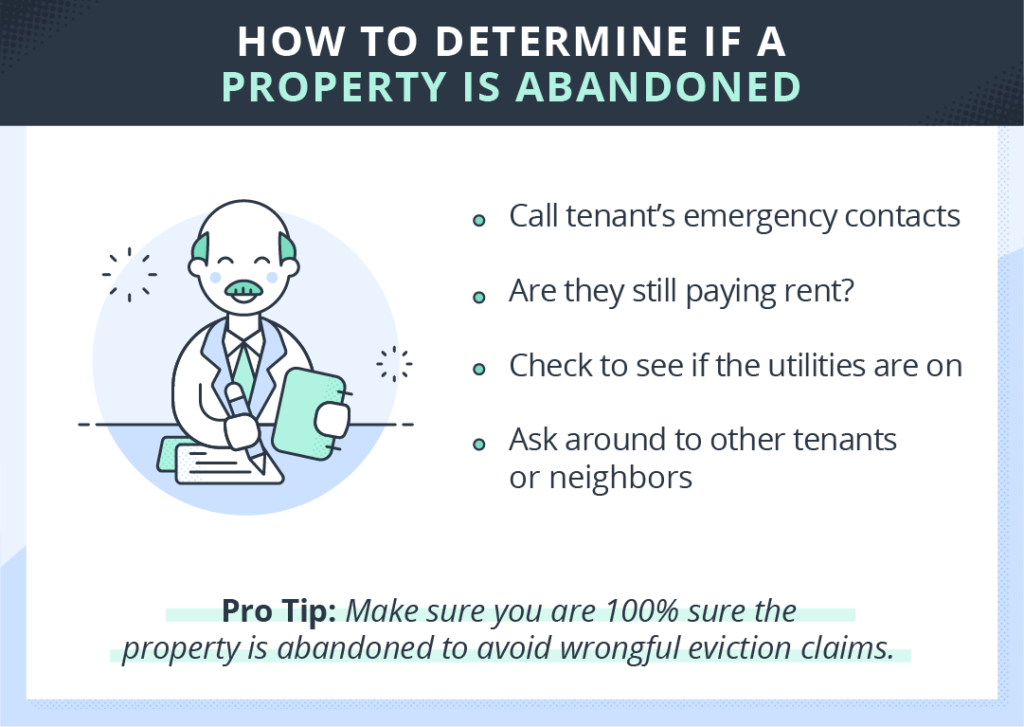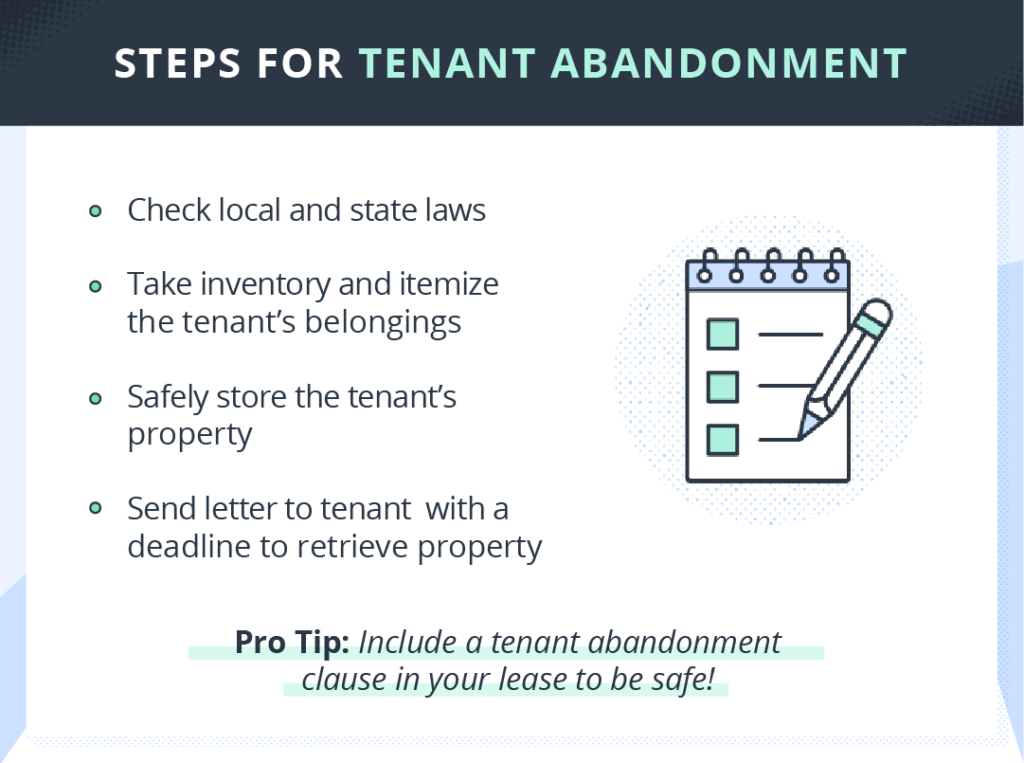Rental turnover comes with the job of being a landlord; tenant abandonment is a rarer situation that you could face. Although unfortunate, with over 40% of Americans planning a move in 2023, tenant abandonment could be more likely. Just like the eviction process, you must follow specific protocol to protect yourself from legal liabilities when it comes to tenants abandoning your rental property. Keep reading to learn what to do when a tenant abandons the property.

What Does Tenant Abandonment Mean?
Tenant abandonment is when a renter has left without notice before the lease has ended. Often in these situations, they have left some of their belongings behind and haven’t been paying rent. This type of behavior is a serious problem for a landlord as consistent rent payments are essential for a thriving rental business. That’s why it’s important to address tenant abandonment in your lease agreement. Explain the process that will occur if a tenant abandons the property and how long they will have to reclaim any belongings left behind.
Why would a tenant abandon the property in the first place? There could be several different reasons, including:
- The tenant moved for a new job.
- They can’t afford rent.
- They’re in the hospital.
- They had an emergency situation.
Even though you want to fill the abandoned property as fast as you can, you must follow the proper tenant abandonment procedures. It’s time to assess the situation with a clear head.
How to Determine if a Property is Abandoned
The first step you should take when it comes to tenant abandonment is to confirm that it is, in fact, abandoned. Your tenant could have left intending to come back without understanding the abandonment rules outlined in your lease agreement. Just because they haven’t been home in a while doesn’t necessarily mean they have abandoned the property.
Avoid wrongful eviction claims by taking stock of the facts and using your resources. Here are four potential ways for you to tell if a tenant has abandoned the property:
1: Check the ledger and reach out
If your tenant is still paying rent, then the unit is most likely not abandoned – they may just be on vacation or an extended stay somewhere else. Contact the tenant to confirm what’s going on. If they’re planning to be gone for longer than a month, let them know you might inspect the property every week just to make sure everything is okay and ensure it’s safe. Ultimately, maintaining open lines of communication with your tenants can help prevent situations like abandonment.
2: Check to see if the utilities are still on
Remember, to enter a property you usually need to give at least 24-hour notice depending on your state. If you don’t hear back after the notice, enter the property and check to see if the water or heat has been turned off – if it is, this means the tenant either didn’t pay their utility bill or shut them off.
3: Talk to other tenants or the neighbors
Sometimes talking to other residents or neighbors is an easy way to determine if the property has been abandoned. Ask if they saw the tenant move out or if they’ve seen them come back to the property recently.
4: Call their emergency contacts
This is a good step to take if you haven’t heard back from the tenant and are concerned for their safety. Make sure you let the emergency contact know the situation and the lease provisions – hopefully, they will be able to contact the tenant and determine if they’ve moved out.
Steps to Take After You Determine It’s Abandoned
Once you have determined the rental property has been abandoned by your tenant, there are a few essential steps you should take to always follow the law as a landlord:
- Check your local and state laws regarding tenant abandonment: There might be specific provisions in your region, especially regarding time limits, so it’s always important to know the legal requirements of handling the abandoned property.
- Take inventory and itemize the tenant’s property: You must make a list of all of the tenant’s belongings left behind. Take pictures of every item as you go – the more documentation, the better.
- Store the tenant’s property: Find a secure area, such as a storage unit, to hold the tenant’s abandoned property until the tenant can pick up their property or until the required time limit has passed.
- Send a letter to the tenant(s): Explain to the tenant how long they have to claim the property and who can claim the property in a certified letter. Make sure you specify:
- The deadline to collect their things, which can range from a week to 45 days
- The inventory list
- The charge for storing their property
- Where the property is being stored
- What will happen if it remains unclaimed
Recovering your rental property from a tenant who has abandoned it is essential to continuing your rental business successfully. Always follow the law – this will save you more time and money by avoiding a wrongful eviction lawsuit. Remember, including a tenant abandonment clause in your lease agreement is a safeguard in case you ever find yourself in this kind of situation.
Pro Tip: Thorough tenant screening will protect you and your property from damages and inconvenient situations like tenant abandonment.
Tenant Abandonment FAQs
How long before you can take over a property?
You must first determine the property is abandoned and once you do, you need to follow your state’s specific laws and timeline regarding tenant abandonment. Some states may require you to keep the property for 30 days, but you can fill the property with a new tenant once it’s been cleared out.
What if a tenant wants to claim their property?
If a tenant contacts you after you have properly notified them with an itemized list, they can claim their property and pay the storage fees.
How is tenant abandonment different from evictions?
An eviction notice is served when a tenant has violated the lease agreement. Tenant abandonment doesn’t necessarily mean there was a lease violation, just that they left the property without notifying the landlord. In both scenarios, landlords have to follow the proper laws to ensure they do not get in any legal trouble.
What should you do with the property once the deadline to claim it has passed?
Depending on the state, once the deadline has passed for a tenant to claim their property you can sell, donate, or throw away the leftover belongings.









